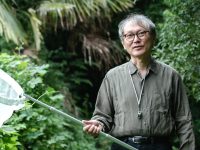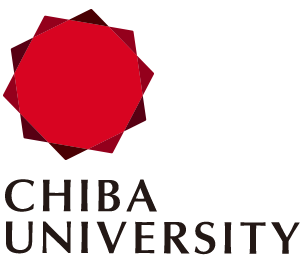By analyzing multiple isotope signatures at once, researchers developed a reliable detection technique to deepen our understanding of selenium’s role
Selenium-based compounds play vital roles in human and animal health; however, accurately detecting their various forms has long been a challenge. Researchers from Chiba University have developed a new method that uses selenium’s unique isotopic “fingerprints” to identify its compounds with high precision. Using this approach, they discovered previously unknown selenium molecules produced by gut bacteria. This technique could contribute to the fields of biology, helping deepen our understanding of selenium’s functions in the body.

Image title: LC-Q-Orbitrap Mass Spectrometer Enables High-Precision Se Analysis
Image caption: Image of an isotope pattern screening technique for the selective detection of selenium (Se)-containing compounds using liquid chromatography (LC)-electrospray ionization mass spectrometry.
Image link: N/A
Image credit: Assistant Professor Yoshikazu Yamagishi from Chiba University, Japan
Image license: Original content
Usage Restrictions: Cannot be reused without permission.
Although present in very small amounts, selenium (Se)-based compounds play important roles in protecting the body from oxidative stress, regulating thyroid hormones, strengthening the immune system, and even detoxifying heavy metals. As we begin to understand more about the biological functions of Se, the need to detect and identify Se-containing compounds has become increasingly important.
Researchers from Chiba University, Japan, have developed a new method that selectively detects Se compounds, addressing a long-standing challenge in the identification of unknown Se-containing compounds. Using a previously unexplored approach, the researchers discovered novel Se-containing molecules in gut bacteria.
The study was led by Assistant Professor Yoshikazu Yamagishi from the Graduate School of Medicine and included Dr. Kazuaki Takahashi from the Graduate School of Horticulture, Dr. Sayaka Nagasawa from the Graduate School of Pharmaceutical Sciences, Professor Hirotaro Iwase from the Graduate School of Medicine, and Professor Yasumitsu Ogra from the Graduate School of Pharmaceutical Sciences, Chiba University, Japan. The study was made available online on September 17, 2025, and will appear in Volume 298, Part A of the journal Talanta and scheduled for publication on February 01, 2026.
The team utilized a technique known as isotope pattern screening (IPS), which involves analyzing the isotopic fingerprint patterns or characteristic cluster of peaks in the mass spectrum of an element. “Many unknown Se-containing compounds exist in nature and may have beneficial functions. Our Se-IPS method can identify these unknown compounds, which could reveal new biological roles of Se,” says Dr. Yamagishi.
The method works by identifying Se-containing compounds through their unique isotopic signature. Se naturally occurs as a mix of six stable isotopes (74Se, 76Se, 77Se, 78Se, 80Se, and 82Se), each present in well-known proportions. When these isotopes combine in a molecule, they create a distinct pattern in mass spectrometry data that acts as a molecular fingerprint, confirming the presence of Se.
Previous automated detection methods relied on only two isotopes at a time, such as 78Se-80Se or 80Se-82Se. However, these limited patterns sometimes led to false positives, since other molecules or background noise could accidentally mimic a two-isotope signal. The new method, Se-IPS, improves on this by examining multiple isotope combinations simultaneously. This greatly reduces the chance of errors and makes the detection of Se compounds much more reliable.
“By using as many combinations of isotopes as possible, a more reliable analysis can be achieved,” explains Dr. Yamagishi.
The researchers carried out their analysis using liquid chromatography quadrupole orbitrap mass spectrometry (LC-Q-Orbitrap-MS). In this technique, liquid chromatography separates the compounds in a sample, while the mass spectrometer detects the isotope signatures of Se with high precision.
Applying this approach, the team successfully detected several known Se compounds, such as seleno-L-methionine and methylselenocysteine, in samples from plants, microbes, and biological fluids. They also identified a previously unknown Se-containing molecule, N-(1-carboxyethyl)-S-(methylselanyl)cysteine (CECys-SeCH3), produced by gut microflora cultured from rat fecal samples.
“CECys-SeCH3 has not been detected in animals to our knowledge. Our analysis shows that this compound is a unique metabolite produced by bacteria and may serve as an important source of sulfur and Se for bacterial metabolism,” says Dr. Yamagishi.
By combining precise IPS analysis with advanced mass spectrometry, this new method offers a powerful and selective way to identify Se compounds. This opens the door to finding many more unknown Se molecules and could even be extended to other elements with characteristic isotope patterns, such as tellurium or zinc.
Se deficiency is known to cause several health problems, including Keshan disease, an illness first recognized in China that can lead to heart failure. By providing a way to identify Se compounds in the body, scientists can gain deeper insights into how this essential element supports human health and helps prevent disease.
To see more news from Chiba University, click here.
About Assistant Professor Yoshikazu Yamagishi from Chiba University, Japan
Dr. Yoshikazu Yamagishi is an Assistant Professor at the Graduate School of Medicine, Chiba University, Japan. He earned his Ph.D. from Chiba University in 2021. His research focuses on gut bacteria, selenium and tellurium compounds, hemoglobin, and forensic toxicology, with expertise in mass spectrometry and multivariate analysis. Dr. Yamagishi has received several honors, including the 2022 Japan Society of Toxicology Encouragement Award and the Young Investigator Award from the Japanese Society of Forensic Toxicology for his work on postmortem drug metabolism and toxicological mechanisms.
Funding:
This study was supported by JSPS KAKENHI, Japan (Grant Numbers 20K18978, 22K19664, and 25K02898) and a grant from the Asahi Glass Foundation, Japan.
Reference:
Title of original paper: Demonstration of isotope pattern screening for selective detection of selenium-containing compounds by LC-Q-Orbitrap-MS
Authors: Yoshikazu Yamagishi1, Kazuaki Takahashi2, Sayaka Nagasawa1,3, Hirotaro Iwase1, and Yasumitsu Ogra1,3,4
Affiliations:
- Department of Legal Medicine, Graduate School of Medicine, Chiba University, Japan
- Graduate School of Horticulture, Chiba University, Japan
- Laboratory of Forensic Toxicology, Graduate School of Pharmaceutical Sciences, Chiba University, Japan
- Laboratory of Toxicology and Environmental Health, Graduate School of Pharmaceutical Sciences, Chiba University, Japan
Journal: Talanta
DOI: 10.1016/j.talanta.2025.128869
Contact: Yoshikazu Yamagishi
Graduate School of Medicine, Chiba University, Japan
Email: yamagishiyo@chiba-u.jp
Academic Research & Innovation Management Organization (IMO), Chiba University
Address: 1-33 Yayoi, Inage, Chiba 263-8522, Japan
Email: cn-info@chiba-u.jp
Recommend
-

Creating a Flourishing Society with Novel Cultivars of Fruits: Integrating Molecular Genetics, Statistical Genetics, and Data Science for Efficient Fruit Tree Breeding
2023.09.08
-

An Insect Enthusiast’s Pursuit: Pesticide-Free Farming for Human-Insect-Crop Harmony!
2023.10.30
-

Examining Social Injustice of Modern Society through “Child Poverty”: Creating a Society Where Every Parent is Respected, and Every Child Thrives
2023.05.26


